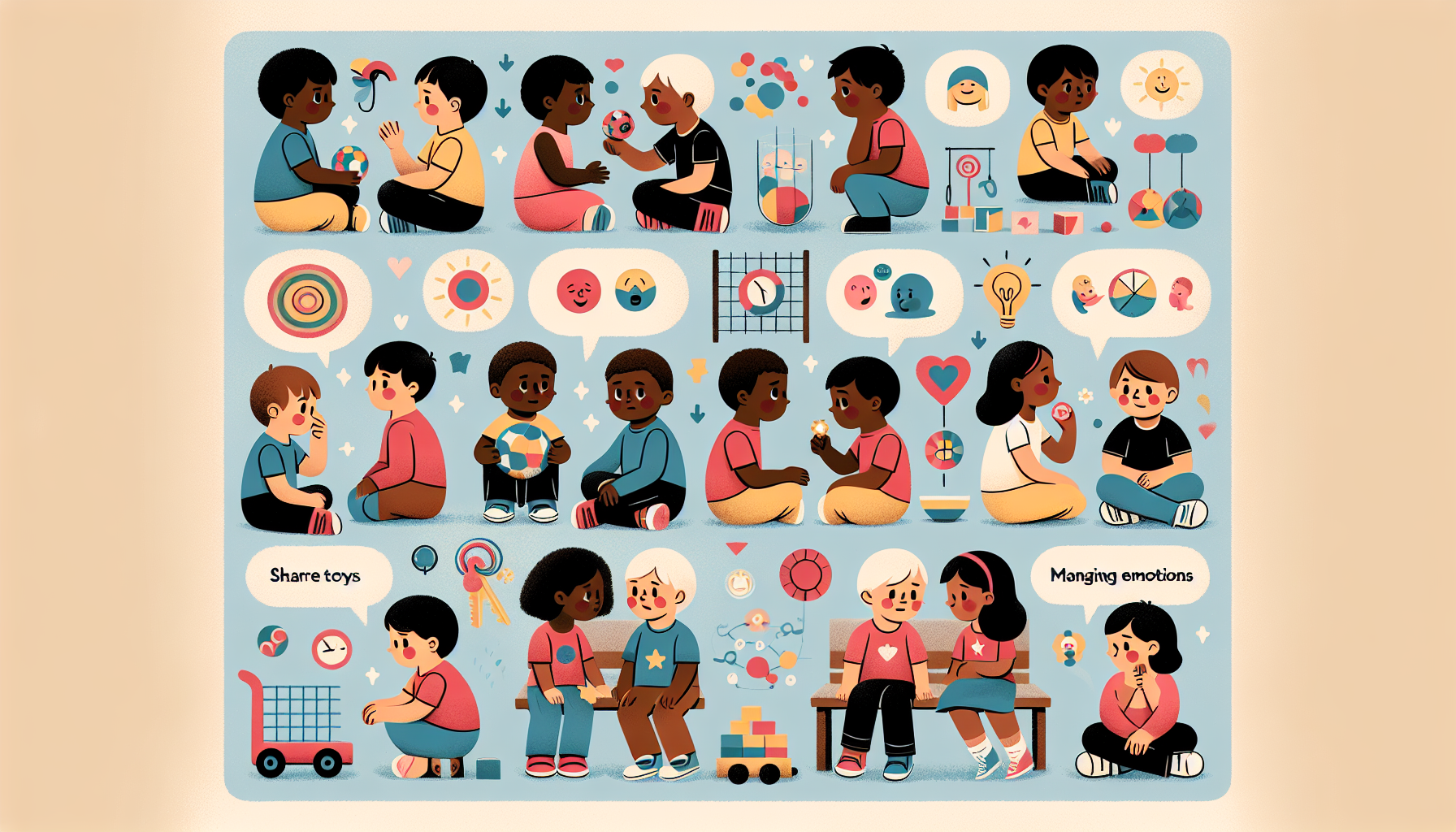Understanding Autism
Autism is a neurodevelopmental disorder that affects individuals in various ways. It is characterized by differences in social communication and interaction, as well as restricted and repetitive behaviors and interests.

What is Autism?
Autism, also known as Autism Spectrum Disorder (ASD), is a complex developmental condition that typically appears in early childhood. It is a lifelong condition that affects individuals’ social skills, communication abilities, and behavior. According to the American Psychiatric Association, autism is characterized by persistent deficits in social communication and interaction across multiple contexts, as well as restricted, repetitive patterns of behavior, interests, or activities.
Autism is considered a spectrum disorder because the severity and combination of symptoms can vary widely among individuals. Some individuals with autism may have significant difficulties in communication and require substantial support, while others may have relatively mild challenges and be highly skilled in certain areas.
Characteristics of Autism
Autism is associated with a range of characteristics that can manifest differently in each individual. Some common characteristics of autism include:
- Social Communication Challenges: People with autism may have difficulty understanding and using verbal and nonverbal communication. They may struggle with social cues, such as maintaining eye contact, understanding social norms, and engaging in reciprocal conversations.
- Restricted and Repetitive Behaviors: Individuals with autism often engage in repetitive behaviors or have intense interests in specific topics. They may adhere to strict routines and exhibit repetitive movements, such as hand-flapping or rocking.
- Sensory Sensitivities: Many individuals with autism have heightened sensitivities to sensory stimuli, such as noise, light, touch, or certain textures. These sensitivities can impact their daily experiences and may lead to sensory overload or avoidance.
- Difference in Social Interaction: People with autism may struggle with social interactions and forming relationships. They may find it challenging to initiate or maintain friendships and may prefer solitary activities.
- Strengths and Abilities: It is important to recognize that individuals with autism also possess unique strengths and abilities. Some may excel in areas such as art, music, mathematics, or problem-solving.
Understanding the characteristics of autism is crucial for creating effective interventions and supports that cater to the specific needs of individuals on the autism spectrum. By promoting awareness and acceptance, we can empower autistic individuals and foster an inclusive society.
Importance of Social Stories
Social stories play a vital role in empowering individuals with autism by providing them with the necessary tools to navigate social situations and better understand the world around them. Let’s explore what social stories are and the benefits they offer.
What are Social Stories?
Social stories are simple, personalized narratives that aim to explain social situations, events, or concepts to individuals with autism. These stories typically use clear and concise language, along with visual supports, to effectively communicate information.
The structure of a social story typically includes a description of a specific situation, the feelings or thoughts associated with it, and appropriate social responses or strategies. By presenting information in a narrative format, social stories help individuals with autism understand what is expected of them in various social scenarios.
Benefits of Social Stories
Social stories offer several benefits for individuals with autism, their families, and caregivers. Here are some of the key advantages:
- Enhanced Social Understanding: Social stories provide individuals with autism with a clear and structured framework to understand social interactions and expectations. By breaking down complex social situations into manageable parts, social stories help individuals comprehend and predict the behaviors and emotions of others.
- Improved Social Skills: Through social stories, individuals with autism can learn and practice appropriate social responses in different situations. These stories serve as valuable teaching tools, helping individuals develop essential social skills such as turn-taking, sharing, and following social cues.
- Reduced Anxiety: The predictability and structure of social stories can help alleviate anxiety in individuals with autism. By preparing them for upcoming events or unfamiliar situations, social stories provide a sense of security and reduce anxiety related to unexpected changes or sensory overload.
- Increased Independence: Social stories promote independence by empowering individuals with autism to navigate social situations more confidently. By equipping them with the necessary information and strategies, social stories enable individuals to make informed decisions and engage in social interactions autonomously.
- Generalization of Skills: Social stories can support the generalization of skills across different settings and contexts. By presenting information in a consistent and repetitive manner, individuals with autism can transfer the knowledge and strategies learned from social stories to real-life situations.
- Improved Communication: Social stories can also serve as a communication tool, allowing individuals with autism to express their feelings, concerns, and requests. By providing a structured format for communication, social stories encourage individuals to articulate their thoughts and engage in meaningful conversations.
The importance of social stories in the lives of individuals with autism cannot be understated. These personalized narratives offer a valuable means of communication, understanding, and skill development, ultimately empowering individuals to navigate social environments with greater ease and confidence.
Creating Effective Social Stories
To effectively harness the power of social stories for individuals with autism, it is important to understand the structure of these stories and how to tailor them to the needs of each individual.
Structure of Social Stories
Social stories typically follow a specific structure that helps individuals with autism better understand and navigate social situations. The structure consists of four key components:
- Descriptive Sentences: The story begins with descriptive sentences that provide information about the situation or topic at hand. These sentences set the context and help the individual understand what the story is about.
- Perspective Sentences: Perspective sentences are included to provide insight into the thoughts and feelings of the people involved in the social situation. This helps individuals with autism understand different perspectives and develop empathy.
- Directive Sentences: Directive sentences offer guidance and suggestions on appropriate behavior and responses in the given social situation. These sentences can provide step-by-step instructions or offer strategies for dealing with challenging situations.
- Affirmative Sentences: Affirmative sentences conclude the social story on a positive note, focusing on the desired outcome or the positive aspects of the situation. These sentences help reinforce appropriate behaviors and encourage individuals to apply what they have learned from the story.
By following this structure, social stories provide a clear and structured framework for individuals with autism to understand and navigate social situations more effectively.
Tailoring Stories to Individuals
One of the strengths of social stories is their adaptability. Each individual with autism is unique, and it is important to tailor social stories to their specific needs and preferences. Here are some considerations for creating personalized social stories:
- Individualized Content: Social stories should be personalized to the individual’s specific interests, experiences, and challenges. By incorporating familiar people, places, and objects into the story, individuals with autism can better relate to and engage with the content.
- Visual Supports: Including visual supports, such as pictures, symbols, or icons, can enhance comprehension and engagement for individuals with autism. Visuals can help reinforce key concepts and provide additional cues for understanding.
- Clear and Concise Language: Social stories should use clear and concise language that is appropriate for the individual’s age and cognitive abilities. Avoid using overly complex or abstract language that may be difficult to understand.
- Consistency and Repetition: Individuals with autism often benefit from repetition and consistency. Repeating social stories regularly can help reinforce desired behaviors and improve understanding over time.
Remember, social stories are most effective when they are tailored to the specific needs and preferences of each individual. Taking the time to create personalized stories can greatly enhance their impact and empower individuals with autism in navigating social situations.
Implementing Social Stories
Social stories are a powerful tool for supporting individuals with autism in various situations. Understanding when to use social stories and how to incorporate them into daily life is key to their effectiveness.
When to Use Social Stories
Social stories can be used in a wide range of situations to help individuals with autism navigate and understand social interactions, daily routines, and new experiences. Here are some common scenarios where social stories can be beneficial:
- Transitioning to a new environment: Social stories can be used to prepare individuals with autism for new environments, such as starting school, going on a field trip, or visiting a doctor’s office. These stories provide a visual guide that helps reduce anxiety and increase predictability.
- Developing social skills: Social stories can be used to teach social skills and appropriate behavior. For example, a social story can explain the importance of taking turns, making eye contact, or using polite language. By presenting information in a clear and structured manner, social stories help individuals with autism understand social expectations.
- Managing challenging behaviors: Social stories can also be used to address challenging behaviors. By presenting alternative strategies and coping mechanisms, social stories help individuals with autism develop appropriate responses to challenging situations. For instance, a social story can explain how to handle frustration or manage sensory overload.
- Preparing for transitions and changes: Social stories are particularly useful for preparing individuals with autism for transitions and changes in routine. Whether it’s a change in schedule, a new caregiver, or a different classroom, social stories can help individuals understand what to expect and how to adapt.
Incorporating Social Stories in Daily Life
To maximize the effectiveness of social stories, it is important to incorporate them into daily life. Here are some strategies for incorporating social stories:
- Repetition and reinforcement: Social stories should be read and reviewed regularly to reinforce the information and help individuals with autism internalize it. By incorporating social stories into daily routines, such as reading them before bedtime or during specific activities, they become a familiar and consistent part of the individual’s life.
- Visual supports: Visual supports, such as pictures, symbols, or drawings, can enhance the comprehension of social stories for individuals with autism. Including visuals that represent key concepts or steps can make the information more accessible and memorable.
- Individualized approach: Social stories should be tailored to the specific needs and interests of each individual with autism. Consider their age, developmental level, and personal preferences when creating or selecting social stories. Personalizing the stories can increase engagement and relevance.
- Collaboration with caregivers and professionals: Collaborating with caregivers, teachers, and therapists is essential for successful implementation of social stories. These individuals can provide valuable insights and feedback, ensuring that the social stories are effective and aligned with the individual’s goals and needs.
By utilizing social stories in appropriate situations and incorporating them into daily life, individuals with autism can benefit from increased understanding, improved social skills, and enhanced coping strategies. Social stories provide a valuable tool for empowering individuals with autism and supporting their overall development and well-being.
Tips for Writing Social Stories
When creating social stories for individuals with autism, certain tips can help ensure their effectiveness and impact. This section will provide guidance on the writing style and language to use, as well as the importance of incorporating visual supports within social stories.
Writing Style and Language
When writing social stories for individuals with autism, it’s important to use a clear and concise writing style. Here are some tips to keep in mind:
- Simplicity: Use simple and straightforward language to enhance understanding. Avoid complex sentences and jargon that may confuse the reader.
- Positive Tone: Maintain a positive tone throughout the story. Focus on highlighting desired behaviors and positive outcomes.
- Concrete and Specific: Be specific and provide concrete examples to illustrate the message of the social story. This helps individuals with autism better comprehend the information and apply it to real-life situations.
- Relevant and Personalized: Make the social story relevant to the individual by incorporating their interests, experiences, and specific challenges they may face. Personalizing the story increases engagement and connection.
- Visual Language: Utilize vivid and descriptive language to paint a clear picture in the reader’s mind. This can help individuals with autism visualize the desired behaviors and outcomes.
Visual Supports in Social Stories
Visual supports play a crucial role in enhancing the effectiveness of social stories for individuals with autism. Here are some ways to incorporate visual supports:
- Pictures and Images: Include relevant pictures or images in the social story to provide visual cues and support comprehension. Visual representations can help individuals with autism better understand the content and reinforce key concepts.
- Symbols and Icons: Incorporate symbols or icons that represent different actions or emotions mentioned in the social story. Symbols can aid in visualizing abstract concepts and facilitate understanding.
- Visual Schedules: Consider using visual schedules within the social story to help individuals with autism visualize the sequence of events or steps involved in a particular situation. Visual schedules provide a visual roadmap that can reduce anxiety and promote predictability.
- Color Coding: Implement color coding within the social story to emphasize important information or distinguish between different elements. Color coding can help individuals with autism focus on specific details and enhance comprehension.
By utilizing a clear and concise writing style and incorporating visual supports, social stories can become powerful tools for individuals with autism. These tips can enhance the effectiveness of social stories, making them more engaging, relatable, and impactful in promoting positive behaviors and social skills.

 We've just released an article!
Check out our blog!
We've just released an article!
Check out our blog!



